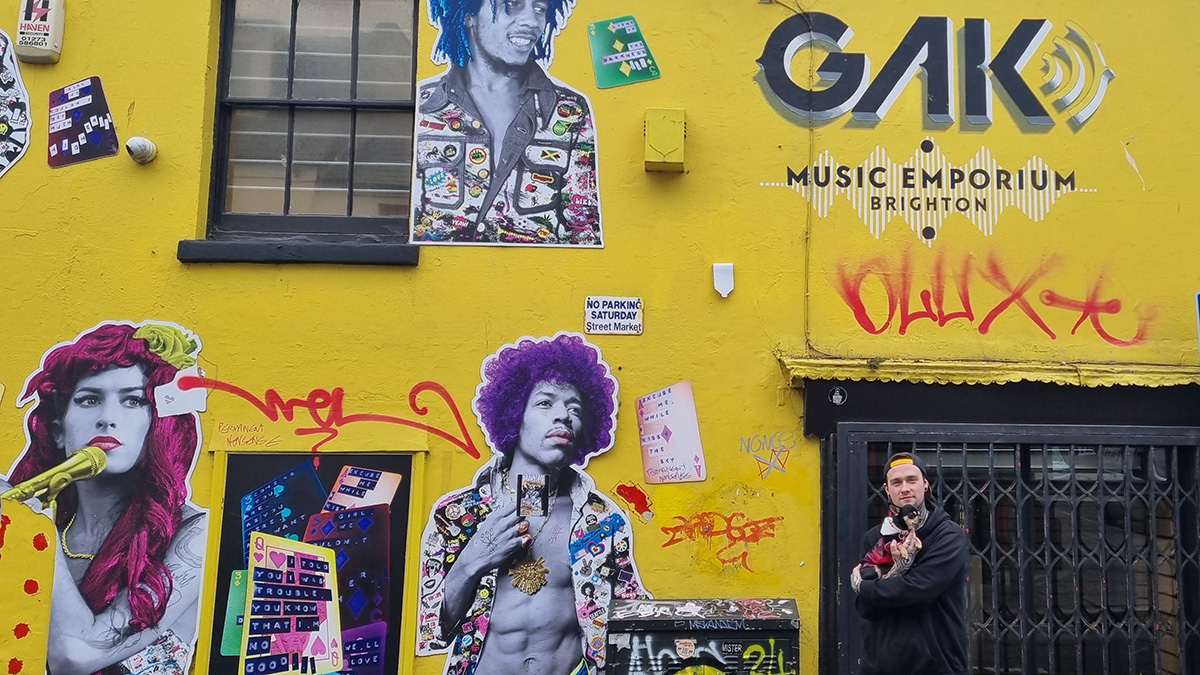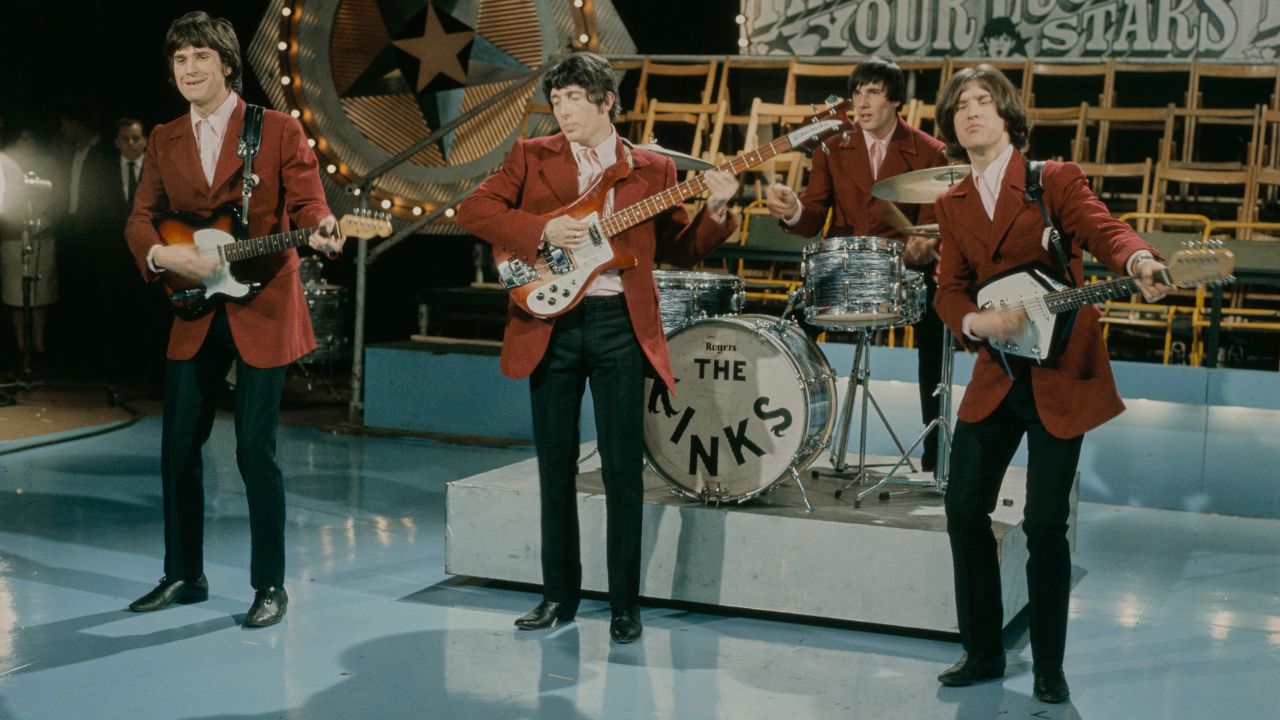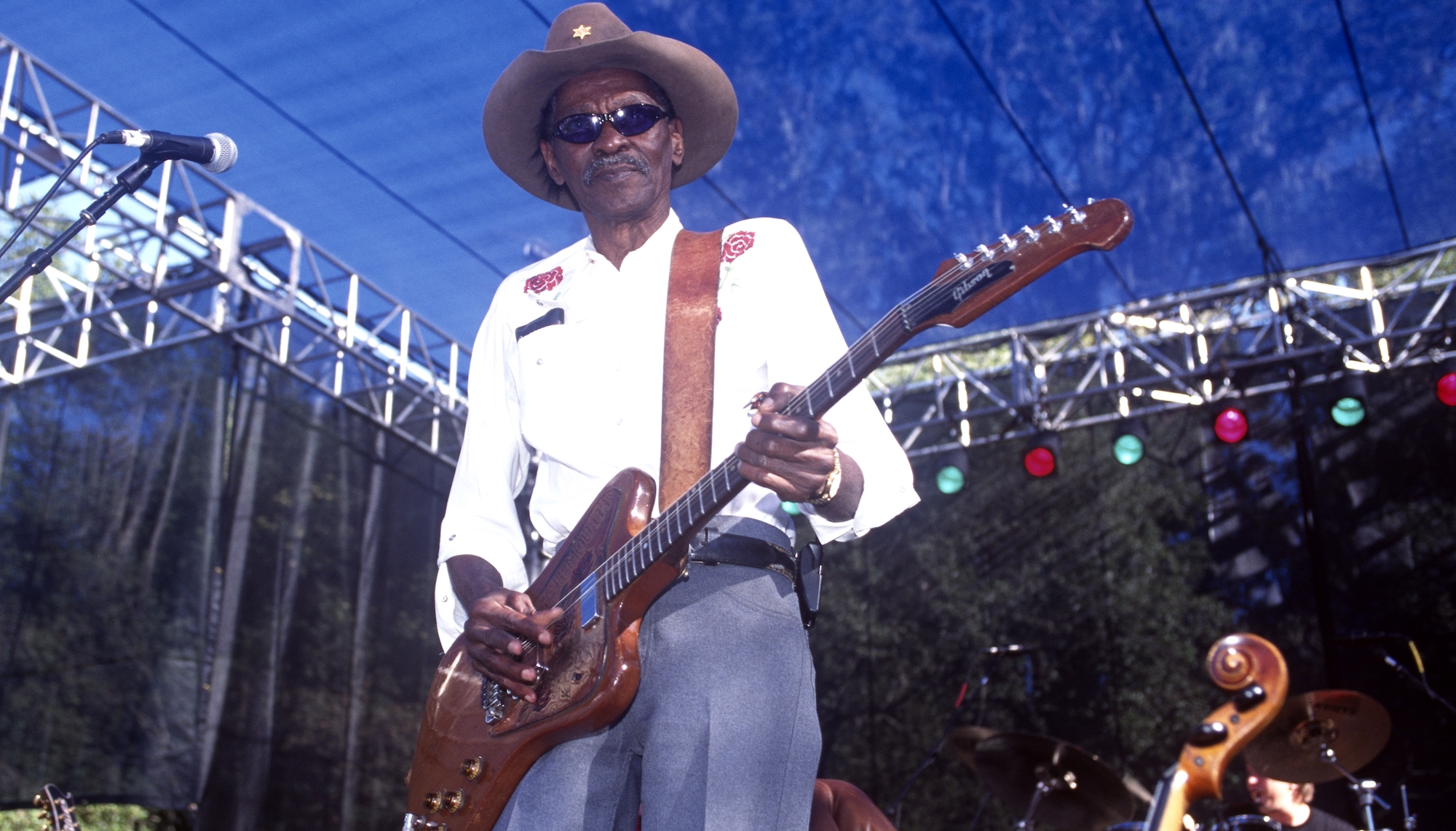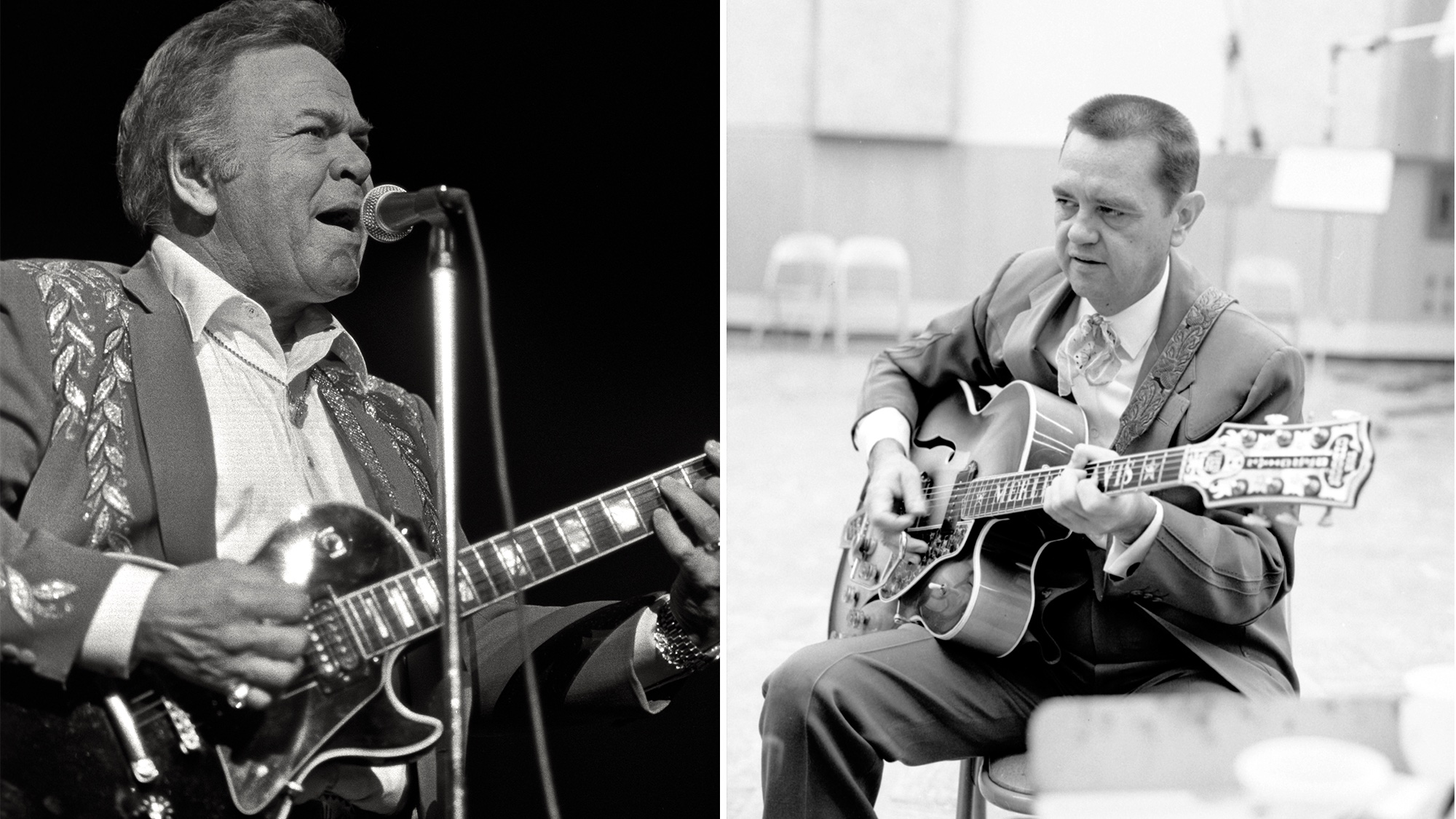
Back in 2005, Guitar World asked the Edge why he never endorsed a guitar.
“I’d really, really have to believe in the thing,” he said thoughtfully, then added, “I don’t want to be that guy on the posters: ‘Buy this guitar’ and all that crap. I’ve talked to a few companies over the years. Plus, I’ve had a lot of people do custom stuff for me—that’s different. Again, I don’t want to be a poster guy in music shops.”
This year, however, the U2 guitarist changed his tune, and he makes no apologies for saying, ‘Buy this guitar’—or amp, for that matter. “I’m so proud of these two pieces,” he says of his recently unveiled Fender Edge Strat and its companion piece, the Edge Deluxe guitar amp. “Each design presents something very unique and updates the original item in some cool ways. Let’s put it this way: I know I’ll be using them quite a bit.”
Along with Bono, the Edge joined Fender’s board of directors in 2014, but he stresses that the idea of rolling out signature products essentially grew out of personal necessity. Some of his Seventies-era Stratocasters, which he relies on for live performances of songs such as “New Year's Day,” “Pride,” “Sunday Bloody Sunday,” “Where the Streets Have No Name” and “Bullet the Blue Sky,” were failing from the wear and tear of year-long stretches on the road.
“[Longtime guitar tech] Dallas [Schoo] started to look for replacements, and things kind of grew from there,” Edge says. “Fender remade some pieces that were totally amazing. Having tried the guitar, I just realized this is a great instrument and I'd be very proud to put my name to it. When something is so good, you just have to share it.”
Below, we present a portion of our interview with the Edge. For the entire feature and more, be sure to check out the October 2016 issue of Guitar World.
You first started using a Strat when you were a teenager, but your interest in the guitar stemmed more from Rory Gallagher than, say, somebody like Jimi Hendrix.
Get The Pick Newsletter
All the latest guitar news, interviews, lessons, reviews, deals and more, direct to your inbox!
Yeah, I knew of Hendrix, and I loved his work, but Rory was the local hero, so it was a different kind of experience. When I was in my teens, I got to see him play, and there were some of his records around, so I kind of cut my teeth learning to play guitar by learning some of his licks and songs. He was really part of a power trio originally, and I think he inspired me to look at the guitar as something that could supply quite a lot in terms of dynamics and textures. There seemed to be so much sound that could come from a guitar, a Strat. That really impressed me.
Tell me about your first Strat. It was a sunburst model, right?
That’s right. That was the first guitar I owned that you could say was kind of a professional-grade instrument. Actually, in those days I only owned 50 percent of it. My brother, Richard, and I used to pool our meager resources to acquire equipment. We had that Strat and we also invested in an amp and a couple of pedals, and that took care of us for a couple of years. Then I think we might have kept a pretty rough, beat-up traditional guitar that we used if we happened to be playing at the same time. That’s how things went for a while. After a while, it felt like we really had to invest in two complete sets of equipment, so we split things up. I took the amp and he took the Strat. He still has it, actually.
The black ’73 Strat you bought in ’81, what was it that impressed you about it?
It's funny, sometimes it’s very hard to define quality when you pick up an instrument. I just call it “musicality,” where you pick it up and you're immediately inspired by what you’re playing. I always talk about finding the songs in the guitar, the riffs and parts. So for that Strat, I just remember that it was the one. I was in New York at one of those stores on 48th Street. I tried a couple guitars—they were all used; they were in the second-hand part of the store—and this one just had it. It was an inspiring instrument and it sounded musically good, and suddenly I was playing parts and ideas. I knew this was the guitar for me.
The Explorer you used on the first album started to make way for the Strat.
Yeah, around that time. Like it is with most musicians, you get a new guitar and you want to really use it. So on the second album, I got the Strat and started to use it fairly heavily, particularly on something like “Gloria.” Then on subsequent records it became an important go-to guitar for me.
When did you decide to put DiMarzio pickups in it?
I kept it stock for a few weeks, but I kept noticing that every time I went to the bridge pickup, it sounded too biting, too…piercing. So I went back to the same shop and told them about it, and they said, “Oh, there’s a guy next door who works on guitars.” I talked to him and he recommended changing the pickup. I think he might have modified the pickup slightly; I don't think it was straight stock DiMarzio. Later on, we looked to see how it was modified, but we couldn’t figure it out, so it could have been a bit of a sales pitch. Whatever it was, it fit my needs perfectly.
What did you get out of that Strat that you weren't getting from the Explorer?
The Explorer was great in so many ways, but there are just certain things the Strat can do that the Explorer can’t just by virtue of the whammy bar. Beyond that, there’s a sound difference that’s different musically. It has something to do with the single-coil pickups. When I would use the out-of-phase position between the bridge and second pickup, there was a sustain in the tone, a feeling in the attack—the transience. It just had this really great quality, and then when you add distortion and overdrive, you can really bring it out.
On some of the songs you’ve played a Strat on, would you sometimes try a different guitar first?
That would happen, but 80 to 90 percent of the time the guitar I’m playing in real time with a particular sound would inspire parts and ideas. It's very much a creative process that starts with the sound and the instrument, and the parts come from that rather than choosing to see if some other guitar suits it best. It's rare that I would go for another guitar, unless there’s some real sonic deficiency of some kind. Occasionally you might go for something else from a production standpoint—you want to bolster the sound. But it pretty much starts with the sound and the part.
Your signature Strat is a Frankenstein based on few of the models. What were your main considerations when coming up with this design?
I'd say 90 percent sound. I wasn't slavishly trying to recreate a Seventies instrument. I just knew the aspects that I loved and wanted to preserve, and then I wanted to see if I could improve them. I experimented a lot. We had nine or 10 prototype instruments made, because I really wanted them to hear the impact the different body weights would have on them.
I tried to make one with an alder body with a rosewood neck, but we ended up with the maple neck on the alder body. Fender also made some ash bodies, trying out both rosewood and maple necks. I was really kind of delving into the nuance of why a guitar sounds the way it does. I tried a couple of them on the road, thinking that the ash body and rosewood neck might deliver more of a classic Strat sound, but I reverted back to the heavy alder body and the maple neck. That’s what works for me as a songsmith.
To put it simply, the maple neck is brighter, and the alder body is deeper and has more sustain. They kind of balance each other out. The guitar has more top end but more weight to it. Compared to the ash body and the rosewood neck, which is a little softer and not as wide in terms of frequency response.
For the rest of this interview, check out the October 2016 issue of Guitar World.
Joe is a freelance journalist who has, over the past few decades, interviewed hundreds of guitarists for Guitar World, Guitar Player, MusicRadar and Classic Rock. He is also a former editor of Guitar World, contributing writer for Guitar Aficionado and VP of A&R for Island Records. He’s an enthusiastic guitarist, but he’s nowhere near the likes of the people he interviews. Surprisingly, his skills are more suited to the drums. If you need a drummer for your Beatles tribute band, look him up.
“My brother's trying to knock Norm down in price. He's worth $800 million. He goes, ‘I'll give you a bottle of whiskey on top’”: Frank Stallone on the prized vintage Epiphone that Sylvester bought him – and the guitar's mysterious origins
“More people play stop-tails than guitars with locking tremolos. We dig both”: EVH delivers on its hardtail promise and launches the Wolfgang Standard T.O.M. – which vows to take Eddie's legacy to new heights











